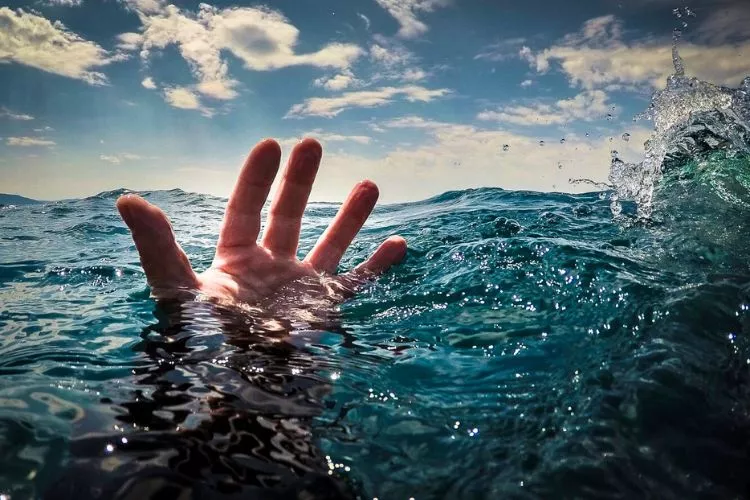Waterboarding is a form of torture involving a person’s simulated drowning by pouring water over their face.
While it is an illegal and inhumane practice, it is unfortunately still used in some parts of the world.
However, here I will help you with a guide on how to survive waterboarding in order to protect yourself from its effects.
In this article, we will explore those methods and explain why it is important to know them, especially for those in high-risk professions such as the military.

How to survive waterboarding? (My Honest Tips)
Waterboarding is a highly controversial and distressing form of torture used throughout history to extract information from unwilling individuals.
Understanding the process, the physical and psychological effects, and how to prepare and endure such an experience is crucial.
Understanding Waterboarding
Waterboarding is a form of torture in which water is poured over a cloth covering the face of the victim, creating the sensation of drowning.
This method induces panic and suffering without causing lasting physical harm.
However, the physical and psychological effects can be severe, including extreme fear, suffocation, hypoxia, and long-term mental health issues such as post-traumatic stress disorder (PTSD).

Surviving Waterboarding
- Build Physical Endurance: Regular exercise, particularly cardio workouts, can help improve your lung capacity and overall physical endurance. This may enable you to better withstand the stress of waterboarding and maintain control during the experience.
- Practice Relaxation Techniques: Learn and practice relaxation techniques such as progressive muscle relaxation, mindfulness meditation, or yoga. These practices can help you remain calm and focused during waterboarding and may also aid your recovery afterward.
- Establish a Coping Mantra: Create a personal mantra or phrase you can repeat to yourself during waterboarding. This can be a grounding technique, helping you maintain focus and mental strength.
- Employ Misdirection: If you are being waterboarded for information, consider providing some truthful but non-essential details to your captors. This may temporarily satisfy them and reduce the intensity of the torture. However, be cautious about sharing information that could put others at risk.
- Control your breathing: Try to take slow, deep breaths whenever possible. This can help regulate your heart rate and prevent hyperventilation.
- Stay mentally focused: Keep your mind on your mental safe space or another calming thought to help you stay detached from experience.
- Conserve energy: Resist the urge to struggle or fight against your captors. This will only expend valuable energy and make the experience more difficult.
- Seek Support from Others: If possible, connect with others who have experienced waterboarding or similar traumas. Sharing your experiences and learning from others can provide valuable insights and support during recovery.
It is important to reiterate that these strategies do not guarantee survival or a less traumatic experience. However, they may aid in coping with the situation and mitigating its long-term effects.
Recovering from Waterboarding
The physical and psychological effects of waterboarding can be severe and long-lasting. It is essential to seek appropriate care and support following the experience.
- Physical Recovery: Seek immediate medical attention after the experience, as injuries or complications may require treatment. This may include respiratory issues, dehydration, or injuries sustained during waterboarding.
- Psychological Recovery: It is crucial to seek the help of a mental health professional after undergoing waterboarding. They can help you process the experience and develop coping strategies for dealing with lingering effects, such as PTSD, anxiety, or depression.
Is there a way to breathe while being waterboarded?
While it is extremely difficult to breathe during waterboarding, some limited techniques may help improve your chances of getting some air.
One tactic is to exhale sharply once the water stops, which can help clear your airway and regain control of your breathing.
However, it is important to understand that waterboarding is designed to create the sensation of drowning, and normal breathing is typically impossible during the process.
Why can’t you hold your breath when being waterboarded?
Holding your breath during waterboarding is not possible for a few reasons. Firstly, water is continuously poured over the victim’s face, making it difficult to find an opportunity to take a breath without inhaling water.

Secondly, the water fills the victim’s sinus cavities and mouth, causing the gag reflex to expel air from the lungs, further complicating the ability to hold one’s breath.
Additionally, the sensation of drowning induces panic, making it challenging to focus on holding your breath.
What does the towel do in waterboarding?
In waterboarding, the towel serves as a barrier that covers the victim’s face and breathing passages, including the mouth and nose.
When water is poured over the towel, it saturates the cloth and obstructs the airflow, making it extremely difficult for the victim to breathe. The sensation of drowning is simulated, causing intense panic and distress in the victim.
Conclusion:
Surviving waterboarding is a daunting and complex challenge due to the physical and psychological trauma it inflicts.
While there is no foolproof method to overcome this form of torture, understanding the techniques used and implementing coping strategies such as controlled breathing, mental focus, and relaxation exercises may relieve the ordeal.
It is crucial to remember that the long-term effects of waterboarding can be severe, and seeking appropriate care and support for recovery is essential.
By raising awareness of the brutality of waterboarding, we can advocate for preventing such inhumane practices and work toward a world where human rights are respected and upheld.


